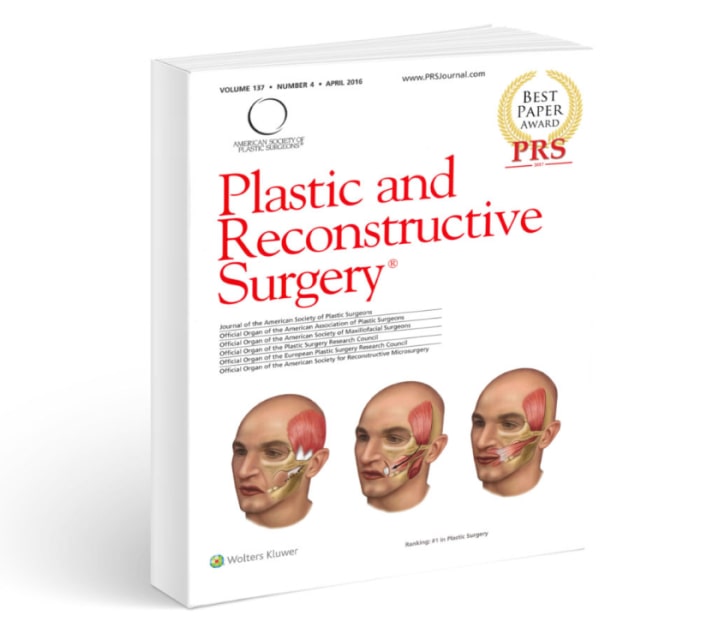Why go to a pediatric plastic surgeon?

A pediatric plastic surgeon is someone who has completed an accredited program at a pediatric hospital and devotes a large part of his or her practice to pediatric reconstructive surgery. Dr. Andre Panossian has completed two separate fellowships in the world of pediatrics. After completing his residency at the University of Southern California, he completed a clinical fellowship at the Hospital for Sick Children in Toronto, considered to be one of the best pediatric hospitals in the world. Dr. Panossian went on to do additional training at Harvard’s Boston Children’s Hospital, where his focus was on Vascular Anomalies and Congenital Hand Deformities. Rest assured that there is no one better suited to meet your child’s reconstructive needs.

“Children are not just little versions of adults.”
Reconstructive surgery in kids must take into account growth and the unique anatomy of a child.

What types of problems does a pediatric plastic surgeon treat?
Pediatric plastic surgery addresses the reconstructive requirements of children with birth deformities, victims of trauma, tumor removal, birthmarks, traumatic injuries, vascular malformations, and craniofacial anomalies. Some of the common issues treated by Dr. Panossian include cleft lip and palate, microtia (failure of ear development), facial paralysis, vascular birthmark removal, burns, adolescent breast deformities, webbed fingers and toes, extra fingers and toes, lacerations, tethered tongue and many more.
These problems are not commonly encountered in the adult population. Therefore, a regular plastic surgeon is often not the correct person to see for kids. There are different considerations for reconstruction involved, including the timing of interventions and knowledge of a child’s anatomy. Dr. Panossian has spent considerable time and focus on treating children and has trained at some of the premiere institutions in the world.

Cleft Lip & Palate
Cleft lip and palate occurs in approximately 1 in 700 children. Repair of the cleft lip typically happens at 3 months of age. Cleft palate repair is done at roughly 10 months of age. Dr. Panossian has extensive experience in the repair of clefts of all kinds and participates with different organizations such as Operation Smile.

Webbed Fingers
Webbed fingers, called syndactyly, can present in a variety of ways. They are sometimes part of a condition (such as Apert syndrome) or can more frequently occur by itself. It can affect fingers and toes and can be on one side or both. Dr. Panossian repairs all types of syndactyly, including the toes. It is the second most common hand deformity.

Extra Fingers
Extra fingers, known as polydactyly, is a relatively common birth defect. It can occur on one hand or both and can be treated with surgical procedures by an experienced pediatric plastic surgeon like Dr. Panossian. He has extensive experience in treating polydactyly and restoring normal finger function.

Microtia
Microtia refers to the underdevelopment or absence of the ear. For many kids, this can be a source of great self-consciousness. Dr. Panossian offers two types of ear reconstruction using either an artificial implant (eg, Medpor) or the child’s own rib cartilage. These can be complex reconstructions, but the results can be quite amazing.

Prominent Ears
Prominent ears are a very common occurrence. They frequently run in families. Although they may be cute, ears that protrude excessively can be a source of social discomfort and bullying. Dr. Panossian performs otoplasty (or ear pinning) to correct prominent ears. He also uses the EarWell device for infants with ear deformities.

Birthmarks
Birthmarks come in various shapes and colors. Vascular birthmarks such as hemangiomas are some of the most common types. Brown birthmarks (or nevi) can occur anywhere on the body. Sebaceous nevi (greasy birthmarks) are usually present at birth. Birthmarks may be removed for a number of reasons.

Awards
Best Paper Award by The PRS
Dr. Panossian has received the highest honor bestowed by the Plastic & Reconstructive Surgery Journal, the pre-eminent publication of the American Society of Plastic Surgeons. Read about his ground-breaking smile reanimation technique.
Andre Panossian MD
Philosophy
Pediatric Specialist Dr. Andre Panossian MD’s Philosophy on Children requiring plastic and reconstructive surgery is approached much differently than adults. The examination alone can be quite traumatic for children. Dr. Panossian advocates an empathetic, gentle approach to treating kids to put their minds at ease. Even when performing in-office treatments such as laceration repair, there are techniques that can help children get through their predicament and lessen their anxiety.
In addition, it is important to understand that children’s bodies and plastic surgery issues are not the same as adults’. A growing child will have different considerations regarding the timing of treatment, the type of treatment needed, underlying syndromes, and anatomical variations that simply do not occur in adults. A pediatric plastic surgeon with a wealth of experience is the ideal person to treat your child in order to reconcile these differences. Contact us today if your child requires treatment for a physical difference or injury.
Preparing for Pediatric Plastic Surgery: What to Expect
Preparing for pediatric plastic surgery requires a comprehensive approach and understanding of soft tissue, reconstructive surgery teams, pediatric surgeons, and the variety of conditions that can require special surgical techniques for children. It is important to be prepared for the complexities associated with plastic surgery for children, as this requires specialized knowledge and care. A skilled team of pediatric surgeons can offer a wide range of surgical techniques that are suitable for a variety of conditions.
The first step to preparing for pediatric plastic surgery is understanding the type of treatment needed. Depending on the particular condition or injury being treated by the plastic surgeon, different procedures may be utilized in order to best suit each individual situation. In addition to considering the specific procedure, it is also important to ensure that you have chosen an experienced and qualified pediatric plastic surgeon who has experience in treating children with similar conditions.
Finally, it is important to understand what will take place during the preoperative process prior to your child’s surgery. Working together with your chosen surgeon and their staff, you should make sure that you are informed about all relevant steps leading up to the procedure, including any tests or assessments that your child may need and any information regarding postoperative care and recovery.
Recovery and Aftercare for Pediatric Plastic Surgery Patients
Once the pediatric plastic surgery is complete, the recovery process begins. Comprehensive care and aftercare are paramount for children who have undergone any type of plastic surgery. In order to ensure the best possible outcome, a multidisciplinary approach should be taken in which a care team comprised of physicians, nurses, social workers, and other healthcare professionals are enlisted to provide personalized and compassionate care. This coordinated care is key in ensuring that each individual child receives individualized care tailored specifically to their needs.
Social workers can play a vital role in recovery and aftercare for pediatric plastic surgery patients as they can provide emotional support through counseling during an often difficult time. Additionally, they can help connect families with necessary resources, such as support groups or financial assistance programs that may be available to them.
When it comes to healing from cosmetic surgery or reconstructive procedures, there is no one-size-fits-all approach; individualized treatment plans should be tailored specifically for each patient’s unique needs and circumstances. With comprehensive care from a multidisciplinary team of healthcare professionals who are dedicated to providing compassionate and coordinated care, pediatric patients can experience the best possible outcomes post-surgery.


